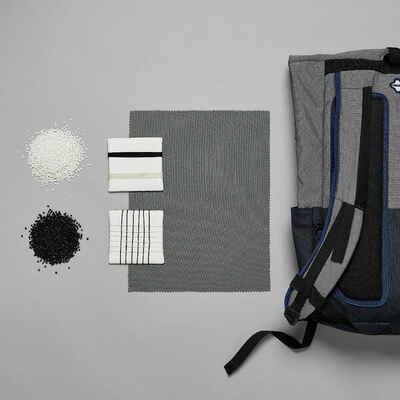Weight
Total weight 4.8 kg
Parts can be separated to share the load.
Flysheet 1980 g
Bedroom 1270 g
Pole kit 1110 g
Pegs (12 pieces) 175 g
Guy ropes (7 pieces) 65 g
Bags 105 g + 30 g
Repair kit (ferrule) 20 g
To protect your product and increase your protection from the sun and bad weather, you can complement your MT500 4P tent with the groundsheet with reference: 8545732.
Weights, volumes & dimensions may vary slightly due to production tolerances.
Size and living space
Length of the bedroom 215 cm
Width 230 cm at the head & 210 cm at the feet
Height of the bedroom 122 cm at the highest
The very large entrance (storage / living space in front of the bedroom is 205 cm deep and 240 cm wide, so almost 5 sqm, enabling 4 people to sit or shelter mountaineering and trekking equipment (rucksacks, shoes, bikes, etc).
7 pockets in the bedroom. Washing line loops.
Architecture, tent poles and tent pegs
Aluminium poles 7001 Ø 10.5 mm.
Durable lightweight aluminium.
Tent pegs/stakes:
Length 17 cm, Ø 6.1 mm.
Non-anodised 7075 aluminium for increased strength and maximum lightness.
The 3 poles form a non self-standing tunnel. This structure forms a very light and hardwearing tent that needs to be fixed to the ground and does not stay up alone.
Pitching/striking
Extremely quick pitching/striking. The flysheet and bedroom are pre-assembled. Insert the tent poles into the flysheet cover. It is also quick to strike.
To store the tent in its bag, fold the tent in half to about the length of the bag, fold up the poles into a bundle onto the bedroom or flysheet, roll everything up tightly to slide into the bag.
Waterproofing
Forclaz tents are laboratory-tested: pitched tent, 200 litres/sqm/hour (3 hours, equivalent to a tropical storm). They are also tested in the field by a sample user group. 75 denier polyester flysheet, polyurethane-coated (interior) water-repellent treatment (exterior), P75D groundsheet in the bedroom.
Seams taped with heat-sealed strips.Multi-component bedroom (P66D) that is breathable, provides protection from the wind and reduces condensation.
Wind resistance
We test all our tents in a wind tunnel on a turntable where we can expose each side of the tent to the wind.
To test its wind resistance, the tent must be properly pitched, taut but not stretched, with all the guy ropes in position around the tent. It should remain habitable at wind speeds of 70km/h, measured near ground level.
Our tents are certified by the CSTB independent laboratory in Nantes.
Ventilation and condensation prevention
Bedroom with mosquito screen for ventilation and water-repellent fabric to protect from condensation and draughts. Large vent at front of tent and additional vent at feet end.
To reduce condensation inside your tent, it must be properly pitched, with the fabric kept taut without being over-stretched. Vents and good air flow will help reduce humidity inside your tent.The back of the flysheet lifts up for better ventilation.
Seasons
3-season tent: your tent will protect you from the harsh weather conditions you can encounter in the spring, summer or autumn. It will withstand light snowfall but is not designed to withstand heavy loads that would weigh on the structure.
In case of snow, remember to shake your tent regularly in order to bring down any snow that has accumulated to avoid putting too much weight on the structure of your tent.
Repairs and After-sales service
As designers, we care about the durability of our products, which is why all our tents are designed to be repairable.
You will find the detachable parts (poles, bedroom, etc.) in store or in the workshop of your local Decathlon, or on the website.
If you have a problem, don't hesitate to have your tent looked at in your local Decathlon store.
Repair kit (ferrule, patch): 20 g
Durability
Your tent is designed for itinerant bivouacking, it is therefore not designed for static use in the sun.
We recommend that you avoid leaving it in the sun as the ultra-light fabrics can be sensitive to UV light, that damages them.
 Process
Process



